AOTrauma Nordic Foot & Ankle Symposium
First AOTrauma Nordic Foot & Ankle Symposium held in Stockholm
Lecture hall
On September 10, 2010 the first AOTrauma Nordic Foot & Ankle Symposium took place at the Sophiahemmet Hospital in Stockholm, Sweden. The event was hosted by Per-Henrik Agren, and AO Trustees Hans Törnqvist and Michael Möller. They, and the members of the AO Foot & Ankle Expert Group chaired by Andrew Sands, made up the faculty. 40 surgeons from Sweden, Denmark and Finland participated. This was not a didactic course but rather a case-based symposium looking at individual cases and evaluating outcomes in order to draw conclusions for principle treatment strategies for fractures of the foot, sequelae of reconstructed posttraumatic foot, flatfoot, and cavus foot.
Cavus foot
The cavos varus foot has to be considered as a biomechanical challenge. Patients complain of two problems: pain, particularly in the forefoot, and instability of the hindfoot and ankle. To manage these problems increasing the total contact area of the foot and balancing the forces going through the foot to maintain the line of force of the limb through the contact area need to be achieved. The foot and ankle can be a mobile dynamic deformity, semi rigid, rigid or eventually have supra imposed arthritic changes; as much as possible movement in the foot should be maintained by extra articular bony surgery and soft tissue balancing.
Management
Sequelae of reconstructed posttraumatic foot
Discussion focused on reconstruction of the post traumatic ankle and foot. Les Grujic presented a case on a talar neck malunion which stimulated lively discussion on treatment options. Two participants presented excellent discussion cases. The first involved a longstanding fracture of the calcaneus with a dislocation of the majority of the calcaneus under the fibula. This was complicated by the fact that the patient had a glycogen storage disorder, severe lymphoedema and neuropathy. Longstanding severe deformity, shortening and soft issue considerations were discussed with the audience.
The second case involved a high fibula fracture, initially managed with syndesmotic screws. The procedure failed and the patient presented with early valgus OA of the ankle and tibialis posterior insufficiency. Many treatment options were presented, with considerable differences in opinion between faculty and participants alike.
Case discussion
Flatfoot
The salient features of acquired flat foot and the thought process of reconstruction were discussed. Michael Castro then presented several cases of acquired flatfoot deformity of varying degrees. There is a great deal of controversy in the treatment of these problems. This controversy was evident during the course of the discussion. The use of the artheresis screw versus lengthening of the lateral column stimulated debate. It was disclosed that the subtalar implant is not widely used in the European community. Two cases of grade IV posterior tibial tendon insufficiency were presented. Two very different surgical procedures were performed both providing satisfactory results. The importance of foot alignment on the ankle was demonstrated to be the key to success in surgical management. The varied perspectives emphasized the importance of increasing our understanding of the deformity and treatment options.
Case discussion
Fractures of the foot
There was a common agreement that due to being afraid of implant failure, surgeons tend to take a more defensive strategy post surgery, which in trauma cases with normal bone and no side effects may be too over-protective. On the other hand, aggressive surgical strategies should improve the rehabilitation process of the patient, leading to avoid collapse of the column. Information gathered from plain x-rays and ct-scans are important to plan surgical approaches as one can see occult fractures and different and unsuspected lines of fractures and comminution. One can plan the direction of screws to be as perpendicular to the plane of the fracture as possible to achieve ideal mechanical fixation. Emphasis was made to preserve the length of both medial and lateral columns using the new plates. One result of the discussion on talus fractures was that if the conservative treatment fails but would not make the later reconstruction more difficult, conservative treatment should be tried first. Treatment selection for fractures in diabetic patients depends on patient compliance and environment. It may be more suitable to use a cast than an operative treatment with eg the Hindfoot Nail if the patient will not follow the after-treatment protocol. Additional drug treatment was not recommended in general but rather getting ensuring a patient’s regular medication was optimized together with their doctor.
Summary & Outlook
The format of a case-based discussion proved to be very attractive to the senior audience and also the faculty who are looking forward to continue intensive discussions like the one in Stockholm at the AOTrauma Foot &
